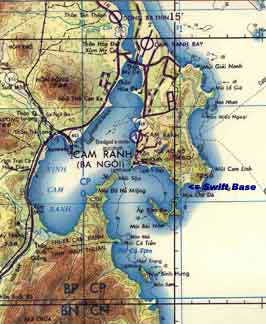 The deep water harbor of Cam Ranh Bay |
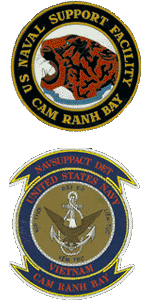 |
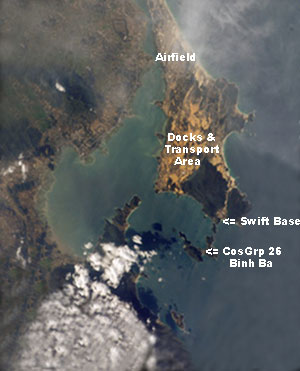 Satellite image of Cam Ranh Bay Harbor |
|
The Bay of Cam Ranh is one of the jewels of Vietnam. The long protective seaward peninsula and natural inner and outer harbors form what many believe to be the best and most beautiful deep water port facility in the entire world. |
It also has a long history of military usage going back as far as 1905, when the Russian Fleet under Admiral Zinovy Rozhestvenski stopped there during its long around the world voyage to meet defeat at the hands of the Japanese Admiral Heihachiro Togo during the Battle of Tsushima. The Japanese also used the bay to assemble their warships and transports as they prepared for the invasion of Malaysia in the very early part of World War II. Which ultimately led to the downfall of Singapore. |  |
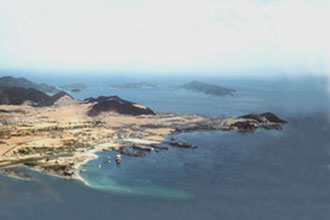 |
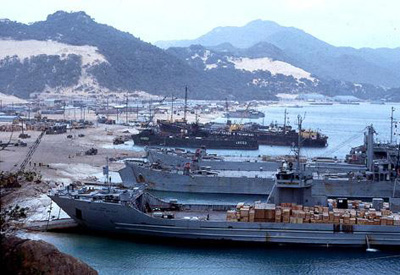 |
During the Vietnam conflict, the United States turned the bay into a major supply entrance point. Besides the natural anchorages, significant off-loading docks for large cargo ships and their associated warehouses were put in place. The US Army based a number of transportation units there to distribute supplies by semi-tractor trailer trucks throughout South Vietnam. |
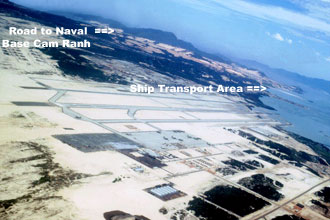 |
In addition, a large USAF base was constructed with runways long enough to accommodate the huge C-141 and later C-5 transport aircraft. This was used not only for cargo, but also as a main entrance and departure point for many of the American personnel assigned to the conflict. The entire northern half of the eastern peninsula, which protected the bay from monsoon weather and seas, was a beehive of military logistical activity begining in 1966-67, and remained so for as long as the US was involved in the conflict. |
The US Navy also based some of their Market Time patrol aircraft at Cam Ranh. A squadron of P-2 Neptunes operated from the air base. And until April of 1967, one of the final remaining P-5 Marlin sea plane squadrons in service used the quiet waters of the bay as an excellent runway and sea plane tender anchorage from which surveillance flights were made. Here the USS Salisbury Sound (AV-13) is visited by a Swift Boat, with a P-5 Marlin hoisted on deck for maintenance. |  |
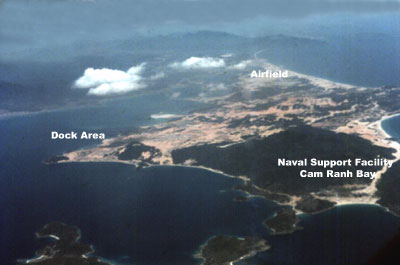 |
At the southern tip of the long peninsula, just off the point identified on the charts as Mui Cha Da, and referred to by personnel from other services as South Beach, was Naval Support Facility Cam Ranh Bay. This served as home base for the fourteen or so Swift Boats of Coastal Division 14, and starting in mid 1967, the Commander of all Swift Boats (Coastal Squadron One) and the Commander of Operation Market Time Task Force 115. |
 |
The base was not very large and was isolated from the more densely populated northern half of the peninsula by a hard packed road that meandered along the eastern coast and beaches.
|
Rising up a small grade in the low gap in between the two hills visble in the far distance of the image above, you were presented with an overview of the quiet cove below with its clustering of buildings that comprised the US Naval Support Facility. You then began your descent down to the base. Binh Ba Island, protecting the entrance to the bay, and the home of the VNN Coastal Group 26, looms off in the background |
 |
 |
Entering the "downtown" portion of the base, the buildings on the left, or beach side, consisted of the housing barracks, the off duty clubs, and the Coastal Division 14 headquarters building. On the opposite side of the "street" were the NSF Cam Rahn Bay offices and messing facilities, the CTF 115 (Market Time) Headquarters and the offices for Coastal Squadron One |
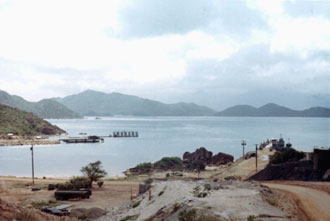 |
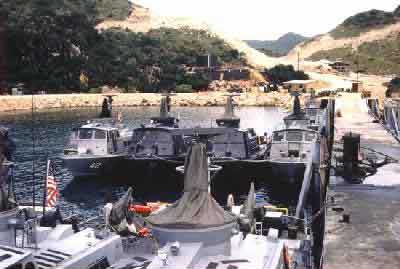 |
By continuing on straight, you approached the Swift Boat pier through another slight rise and break between two smaller hills, then down into the protected outer harbor of the bay |
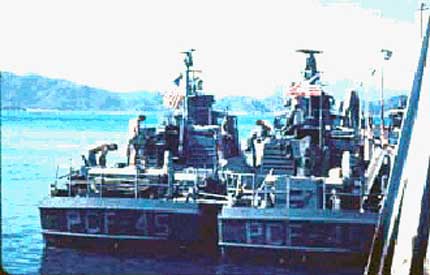 |
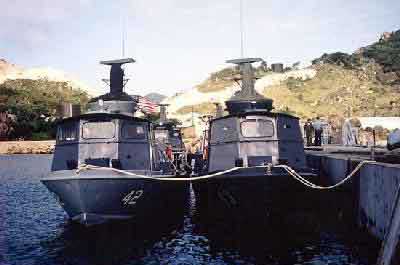 |
|
Coastal Division 14 Swift Boats were nested on either side of the long pier extending out into the harbor. Note the plywood covering over the outer front wind screens on PCF 43. This was an early, temporary attempt to prevent the "blowing out" of these wind screens during heavy seas. Certainly reduced forward visibility. {See "Boat Tour" and "Patrol Activity" for more permanent wind screen solutions. Also "Silvermace II" for the ultimate fate of PCF 43} |
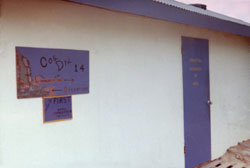 |
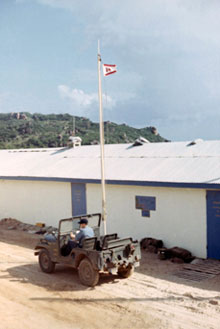 |
 |
Personnel movement between the Coastal Division 14 HQ building and the piers was either by walking or using the rickety old jeep assigned to the division. The clutch or transmission was likely to fail at any time. The US Navy was not known for its sophisticated land transportation. |
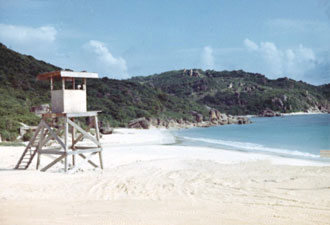 |
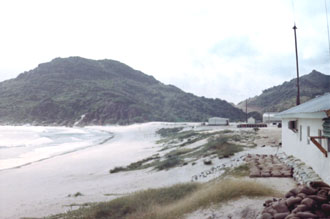 |
Cam Ranh's assigned patrol areas extended from Phan Ri in the south to Vung Ro Bay in the north. As a result, the time required just to get to and from these areas made the patrols long and the turn around interval at the base very short. Unfortunately, this also meant that there was little opportunity to enjoy the picturesque beach just outside our barracks area.
|
|
However, the Swift Boat crews did manage to find time to engage in relaxation during the off duty periods when they were not out on patrol. After making sure that the crew's boat had been looked after properly and was ready for the next patrol, then activities such as cook outs, kicking one's feet up in one of the clubs, or participating in a beach front game of Jungle Ball were welcomed diversions. | 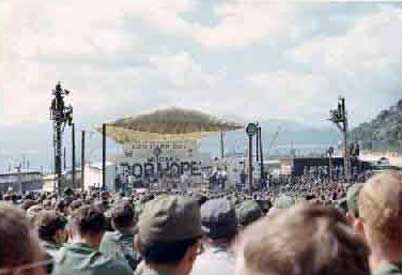 |
And no tour in a combat zone would be complete without taking in a Bob Hope Annual Christmas Show. This one was held close to the Army transportation units near the dock area. |
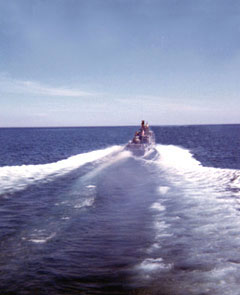 |
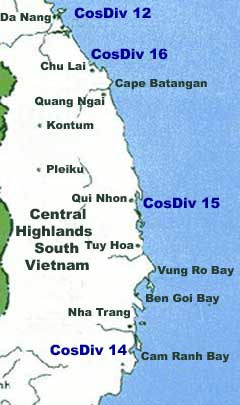 |
 |
| And with that, we are off to Chu Lai with a stopover in Qui Nhon |
As part of President Nixon's 1969 Vietnamization Policy all Swift Boats were to be eventually turned over to the South Vietnamese Navy. A later section of this web site, VNN Turnover, describes one such turnover of Swift Boats at Cam Ranh Bay, with additional images of the harbor in 1970, which also brought a conclusion to the activities of Coastal Division 14 in a ceremony marking its dis-establishment. |
One of the satisfactions of looking back on the activities depicted on this site is re-newing old friendships from those times
thirty-five years ago. I had lost contact with some very dear friends from our days in early 1967 as the five of us went through
training at the Coronado Naval Amphibious Base prior to deploying to Vietnam:
Only a few photographs of those days, as we prepared for war, kept the memories of our close association and deep friendship alive over the intervening years: The first image shows Dan and I discussing the finer points of Swift Boat seamanship during training. The second was taken at Marty's home in Seattle as we prepared to board a C-141 for the flight to Cam Ranh Bay. And two more images show our small group shortly after arriving "in country" at the Cam Ranh Naval Base before our crews were dispersed to our final Swift Boat assignments. Dan and Bruce went north to Da Nang, Dennis to Qui Nhon, and Marty had the farthest to travel to the Gulf of Siam and Phu Quoc Island. I stayed in Cam Ranh. Even though three of us eventually ended up in I-Corps (Coastal Divisions 12 and 16), none of us ever made contact again. At the 2003 reunion of Swift Boat sailors, four of us had the opportunity to again enjoy each other's company for the first time in thirty-five years. As proof of his timeless twinkle and willingness to help a buddy, Dan Daly is shown "directing with wrench and megaphone voice" the dis-assembly of the radio station antennas that were used for Operation Radio Free Swift at the Year 2003 Swift Boat Reunion Since that time, we have also renewed contact with Marty Petrich, and are now hoping that a "real get together" of our Swift Boat Class will perhaps be possible in the future.
|
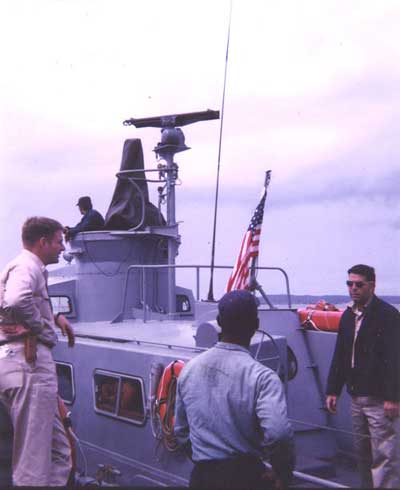 |
|
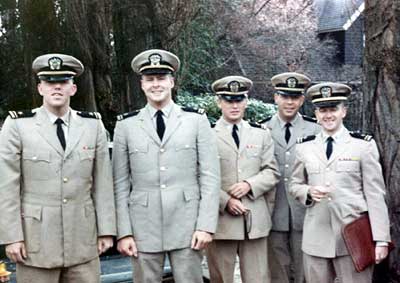 |
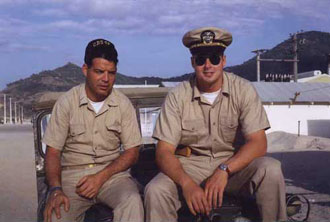 |
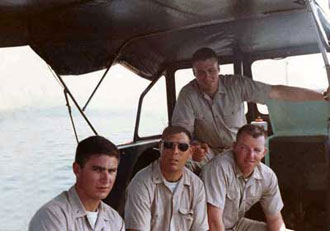 |
 |
This web site is Copyright � 2002 by Robert B. Shirley. All rights reserved. Click on image to return to the homepage
|